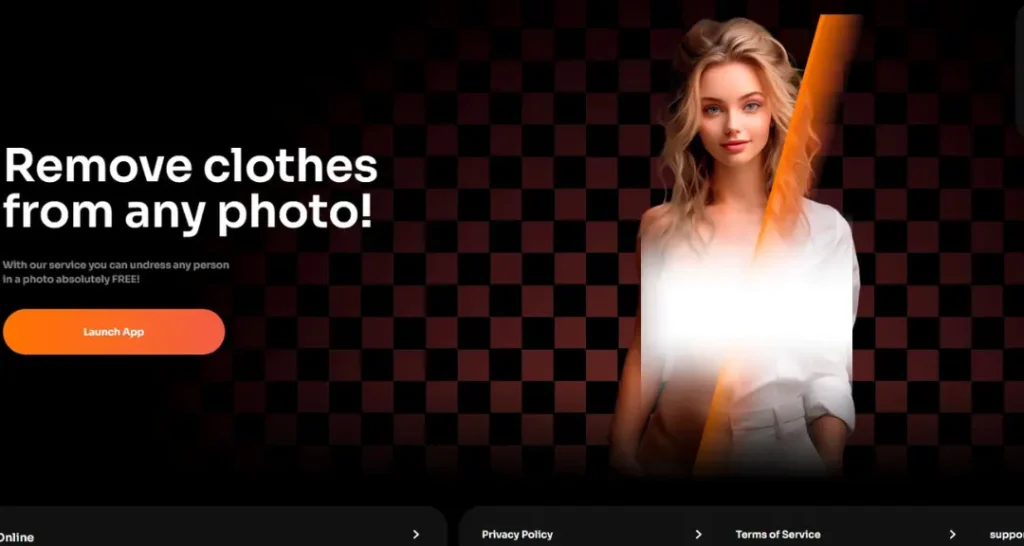Are you intrigued by the rapid advancements in artificial intelligence and its potential to reshape the digital landscape? The emergence of AI-powered "undress" applications signals a significant shift in image manipulation, raising complex questions about ethics, privacy, and the future of visual content.
The world of image editing is undergoing a dramatic transformation, fueled by the power of artificial intelligence. Tools that were once the stuff of science fiction are now readily available, promising to alter images in ways previously unimaginable. At the forefront of this revolution are applications designed to digitally remove clothing from images, often referred to as "undress AI" or "deepnude" applications. These technologies utilize sophisticated algorithms and machine learning models to analyze human figures within photos and generate realistic depictions of what the person might look like without their clothing.
The allure of these technologies is undeniable. The promise of instantly transforming images, altering outfits with a simple click, and exploring creative possibilities is compelling. Platforms like "Muke's undress AI" and "Undresser AI" position themselves as innovative solutions, offering users the ability to modify images and explore a range of outfit styles, from suits and lingerie to bikinis. Some apps, like "Unclothy," focus on the core functionality of removing clothing, while others, like "Undressher.app," offer both free and premium features, catering to different user needs and levels of experience.
However, the rise of "undress AI" is not without its concerns. The potential for misuse is significant, raising serious ethical questions about privacy, consent, and the potential for harm. As we delve into the world of these tools, it's crucial to acknowledge the complexities and navigate the ethical landscape with care.
| Feature | Details |
|---|---|
| Core Functionality | Digitally removing clothing from images of human figures. |
| Technology | Advanced artificial intelligence and machine learning algorithms. |
| Image Processing | Analysis of human figures, generation of realistic depictions without clothing. |
| User Interface | Intuitive user interfaces for ease of use and accessibility. |
| Output | Generation of "deepnude" images. |
| Platform Availability | Often available on various devices, including mobile platforms. |
| Examples | Muke's undress ai, Undresser AI, Unclothy, Undressher.app, Deepnude cc (dngg ai). |
| Free/Premium Options | Free versions often available with basic functionality, premium versions offer advanced features. |
| Outfit Customization | Tools allow users to change a model's clothing from a classic black to a playful pink or a vibrant blue with just a click. |
| Industry Use | Potential applications across various industries, including image editing and content creation. |
| Ethical Considerations | Raises ethical questions regarding privacy, consent, and the potential for misuse. |
Several applications are making waves in the field. "Undressher.app" offers a blend of free and premium features, catering to both casual users and those seeking professional-grade results. "Undresser AI" positions itself as a secure and efficient solution, providing a fast and reliable means to explore the capabilities of AI-powered image modification. While "Undress AI" is being introduced in the app store, the potential for misuse is significant, raising serious ethical questions about privacy, consent, and the potential for harm.
These innovative tools offer a range of capabilities. Users can experiment with different outfit styles, swap clothing colors, and modify character outfits with ease. Some platforms even offer the ability to create "deepfake" images, adding another layer of complexity to the ethical considerations surrounding this technology.
For those seeking to explore the potential of AI in image manipulation, platforms such as "undresserai.io" and "deepnude cc (dngg ai)" offer avenues to experiment with these technologies. The availability of free AI clothes remover options, coupled with the ability to experience the fun and excitement of nudifying photos, is part of the appeal.
The development and availability of these tools have sparked debates. One of the central areas of discussion is around the potential misuse of such applications. The ability to digitally undress individuals without their consent raises serious concerns about privacy, exploitation, and the potential for malicious intent. The creation and dissemination of "deepfake" images have the potential to cause significant harm to individuals, damage reputations, and erode trust.
As we navigate this evolving technological landscape, it's essential to consider the ethical implications. The power to alter images with such precision demands a responsible approach, with a strong emphasis on ethical considerations and the potential for misuse. The future of image editing is being reshaped by AI, but it is our collective responsibility to ensure that these tools are used in a manner that respects privacy, promotes ethical behavior, and protects individuals from harm.
The accessibility of these AI tools is also a significant factor. The ease with which users can upload images, select the "take off clothes" function, and generate altered images raises questions about the responsibility of platform providers. Should there be stricter regulations? Should there be mandatory consent mechanisms? The answers to these questions are crucial as we move forward.
The underlying technology of these "undress AI" applications is based on advanced artificial intelligence and machine learning. By leveraging these technologies, the apps are capable of processing images, detecting human figures, and generating realistic depictions. The process is often streamlined, with intuitive user interfaces designed for ease of use, allowing users to transform images with just a few clicks. Several websites offer online AI nudifiers, allowing users to remove clothes from photos for free, while others, like "Undressher.app", provide both free and premium options, with premium subscriptions offering advanced capabilities and enhanced processing options.
The process typically involves these steps: selecting and uploading an image, the app's AI processing and manipulating the photo, and saving the newly transformed "deepnude" image. The user interface often features an intuitive design, optimized for various screen sizes and resolutions, ensuring a consistent and reliable user experience regardless of the device. This approach is also used on mobile platforms. For example, users can find "undress ai" in the app store, where they can download and install the app on their iOS device.
The concept of "deepnude" images brings up significant ethical questions. This technology can potentially be used to create and share images of individuals without their consent, leading to violations of privacy, harassment, and potential reputational damage. The potential for misuse is particularly concerning in the context of creating fake images for malicious purposes.
As the development of "undress AI" applications continues, a balance must be struck between innovation and ethical responsibility. It is important to consider the ways these tools can be used and to establish safeguards. This includes the implementation of ethical guidelines, as well as legal frameworks. Ultimately, the goal is to minimize the risk of harm and prevent these tools from being used in ways that violate the privacy and rights of others. The future of image manipulation lies in responsible innovation and the careful consideration of ethical implications.


